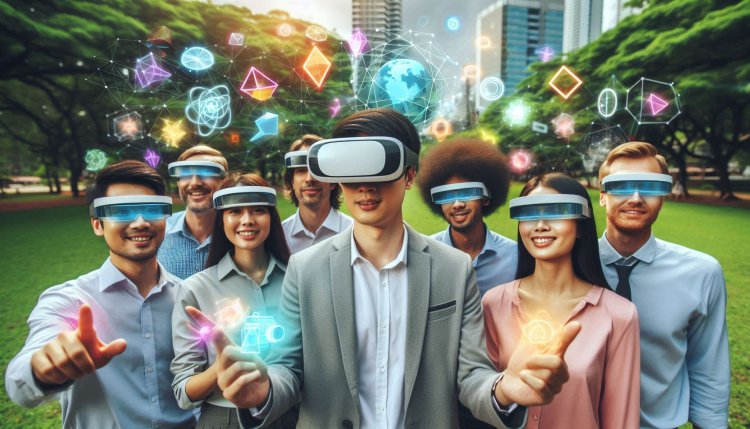Augmented Reality
Discover a new dimension of interactive experiences with Augmented Reality technology. Explore digital content overlaid onto the real world in real-time.

Augmented Reality
Augmented reality (AR) is a technology that superimposes computer-generated images, sounds, or other data onto a user's view of the real world. This technology enhances the user's perception of reality by integrating digital information with the physical environment.
How Augmented Reality Works
Augmented reality works by using sensors, cameras, and other devices to collect data about the user's surroundings. This data is then processed and combined with computer-generated content to create an augmented view of the world. This augmented view is typically displayed on a screen or through a headset, allowing the user to interact with the digital content in real-time.
Applications of Augmented Reality
Augmented reality has a wide range of applications across various industries, including:
- Entertainment and gaming: AR is commonly used in games and entertainment to create immersive and interactive experiences for users.
- Education: AR can be used in education to provide students with interactive learning experiences and simulations.
- Healthcare: AR is used in healthcare for medical training, surgical planning, and patient education.
- Retail: AR is used in retail to create virtual fitting rooms, enhance product visualization, and provide personalized shopping experiences.
- Architecture and design: AR is used in architecture and design to visualize building plans, simulate interior design concepts, and showcase projects to clients.
Challenges and Limitations of Augmented Reality
Despite its many benefits, augmented reality also faces several challenges and limitations, including:
- Hardware limitations: AR devices can be expensive and bulky, making widespread adoption challenging.
- Privacy concerns: AR raises privacy concerns related to data collection, tracking, and surveillance.
- Content creation: Developing high-quality AR content can be time-consuming and costly, limiting the availability of AR experiences.
- User experience: AR experiences can vary in quality and performance, leading to user frustration and disengagement.
Future of Augmented Reality
The future of augmented reality is promising, with advancements in technology and increased adoption across industries. Some potential developments in the field of AR include:
- Improved hardware: Advances in hardware technology, such as lightweight and more affordable AR devices, will make AR more accessible to a wider audience.
- Enhanced user experiences: Innovations in AR software and content creation tools will improve the quality and performance of AR experiences.
- Integration with other technologies: AR is likely to be integrated with other emerging technologies, such as artificial intelligence and 5G, to create more immersive and interactive experiences.
- Expanded applications: AR will continue to expand into new industries and use cases, including automotive, tourism, and remote collaboration.
Conclusion
Augmented reality is a transformative technology that has the potential to revolutionize how we interact with the world around us. As AR continues to evolve and improve, it will open up new opportunities for innovation and creativity across various industries.
What's Your Reaction?

















